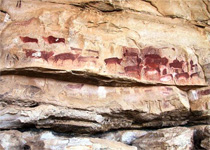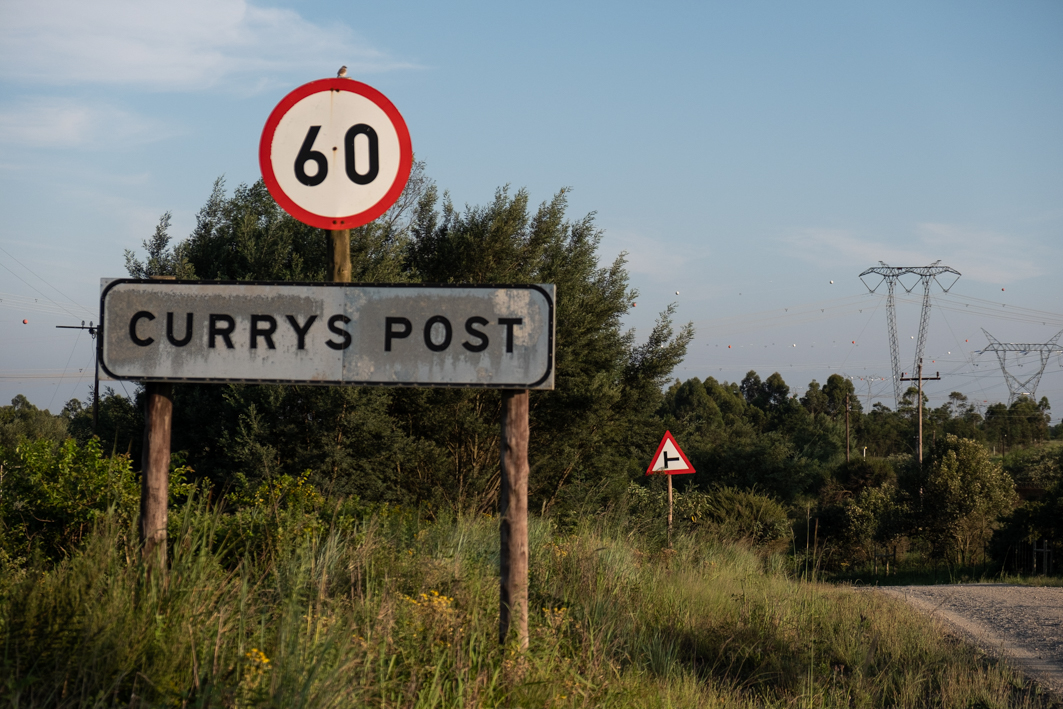Text: Geoff Earnshaw
Photography: Elise Earnshaw
For decades, researchers and archaeologists struggled to decipher the meanings of ancient Egypt’s seemingly simplistic yet surprisingly complex hieroglyphs. While the characters that resembled people, birds, insects and animals were easy to recognise, there was no way to understand the intricate relationship between them, and therefore no way to uncover their overall meaning.
This changed, however, when the Rosetta Stone was discovered during Napoleon’s 1799 expedition to Egypt. The stone contained a fragment of a decree issued on behalf of King Ptolemy V that was written in three texts: ancient hieroglyphs, Egyptian demotic script and ancient Greek. And since researchers now had hieroglyphs translated into a language they already understood (ancient Greek), they were able to decode their meanings. The secrets of ancient Egypt had been unlocked.
Southern Africa has its own Rosetta Stone. It might not be as famous as the one discovered by Napoleon’s men, but it has been instrumental in uncovering the hidden meanings of the San cave paintings scattered throughout the region.
The painting can be found at the Game Pass Shelter, a site near Kamberg in the southern Drakensberg mountains that is widely regarded as one of the best locations to view San rock art. At first, it is difficult to understand why this particular drawing is so crucial to understanding San culture. The shelter is filled with rock drawings and this “Rosetta Stone” doesn’t immediately stand out from the others. In simplest terms, it is a drawing of an animal and four human figures, but look closer, and its complex meaning is revealed.
The animal is an eland. Its head is lowered and its legs appear to be buckling. The hair on its back stands erect. Why this strange depiction of an animal? This behaviour is typical of an eland wounded by the San’s toxic arrows. The eland has been poisoned and is about to die.
Behind the animal, a human figure stands holding its tail. Curiously, the figure doesn’t have feet, but hooves. It is a San shaman and he is busy draining energy from the dying eland. The three other figures in the artwork are dancing. Their arms are stretched out behind them and their backs are bent.
So what is the meaning of this scene? By studying the drawing, researchers realised that it is essentially a metaphor for the close relationship between death and trance in the San culture. For the San, there is very little difference between being dead and being in a trance. In fact, they often referred to a trance as “a death that kills us all”. Once this graphic metaphor had been identified, it was possible to discover other metaphors and religious symbols found in the San’s rock art.
Considering the importance of the Game Pass Shelter, Elise and I were eager to see the site for ourselves, so with a few days to spare, we headed for the Kamberg Rock Art Centre.
San rock art is fairly ubiquitous in the Drakensberg region. About 40 000 artworks in 600 locations have been recorded, but thanks to its close proximity to the Game Pass Shelter, the Kamberg Rock Art Centre is undoubtedly one of the best places to see these drawings and learn about the San. In addition to offering an informative presentation on San history and culture, the centre also offers regular guided hikes to the shelter. Guides leave at 08h00, 11h00 and 13h30 seven days a week.
We joined local community guide Norman Mgcobo on one of these outings. He is an affable character with an excellent command of English, Afrikaans and Zulu.
The first part of our journey to the shelter was quite taxing as the path was pretty steep, but we managed. After about an hour, we came to the aptly named Waterfall Cave where we had an opportunity to take a break and explore the picturesque site. Although the cave is not significant as far as San rock art is concerned, it is considered sacred by traditional Zulu healers who visit the cave regularly to commune with higher powers.
It is also exceptionally beautiful as a waterfall cascades over the entrance of the cave.
After catching our breath at the Waterfall Cave, we tackled the second half of the journey. While the first half of the trail had been difficult, the second half was downright torturous. It was very steep, and according to Norman, about 30% of visitors typically throw in the towel at this point. This is a shame, however, because while the trail is strenuous, it isn’t too long. The shelter can be reached in about 90 minutes, so it is only 30 minutes from the Waterfall Cave.
Once we arrived at the site, Norman unlocked a gate that led to a fenced-off area that surrounded the shelter. Apparently vandalism is a big problem, so a fence was erected to protect this valuable cultural site from hooligans. On the other side of the gate stood a staircase that led to the actual shelter, which is situated on a high, natural rock outcrop.
The first thing we noticed upon reaching the shelter was how colourful it was. The walls were covered in countless vibrant drawings of people and animals.
Norman started by explaining the meaning of the “Rosetta Stone” drawing, and then moved on to point out the meanings of most of the artworks. Elise snapped away furiously with her camera as she didn’t relish the thought of returning to the cave (and its steep trail) to get that “missed” shot.
After Norman had concluded his presentation, we had lunch, and then started the return journey. With gravity now squarely on our side, the trip was thankfully very undemanding and we were back at the starting point in under an hour.
Our brief trip to the Kamberg Rock Art Centre had been great, but we would have liked to stay a little longer. Apart from the Game Pass Shelter, there are other great sites within hiking distance such as the Nuttall’s Shelter, Christmas Cave and Sandra’s Shelter, so it is definitely worth spending three or four days at Kamberg. I have no doubt that we’ll return soon!
TRAVEL PLANNER
The Kamberg Rock Art Centre is a wonderful destination for anyone with an interest in San culture and history. San rock art sites in the vicinity (such as the Game Pass Shelter, Nuttall’s Shelter, Christmas Cave and Sandra’s Shelter) boast some of the best-preserved drawings in South Africa and tours led by community guides take place every day. The highlight is undoubtedly the Game Pass Shelter, which is commonly referred to as the Rosetta Stone of San rock art.
Getting there: If travelling from Johannesburg, follow the N3 south until you reach the Mooi River North Interchange. Take the exit to Rosetta, and then turn right to Kamberg.
If travelling from Durban, take the N3 north until you find the Nottingham Road exit. Take the exit to Rosetta, and then turn left towards Kamberg.
Where to stay: Accommodation within the Kamberg Nature Reserve consists of five double chalets (R192 per person), one six-bed chalet (R130 per person) and one rustic eight-bed chalet (R90 per person). There are no camping facilities at Kamberg, but Highmoor (13km from Kamberg) boasts seven stands with full facilities. The cost is R70 per person.
Guided hike: Community guides leave for the Game Pass Shelter at 08h00, 11h00 and 13h30 every day. The guided hike takes about four hours to complete and costs R60 per person. The price includes a 40-minute DVD presentation.
Contact: Tel. 033 267-7251 (Kamberg); Tel. 033 267-7240 (Highmoor)









